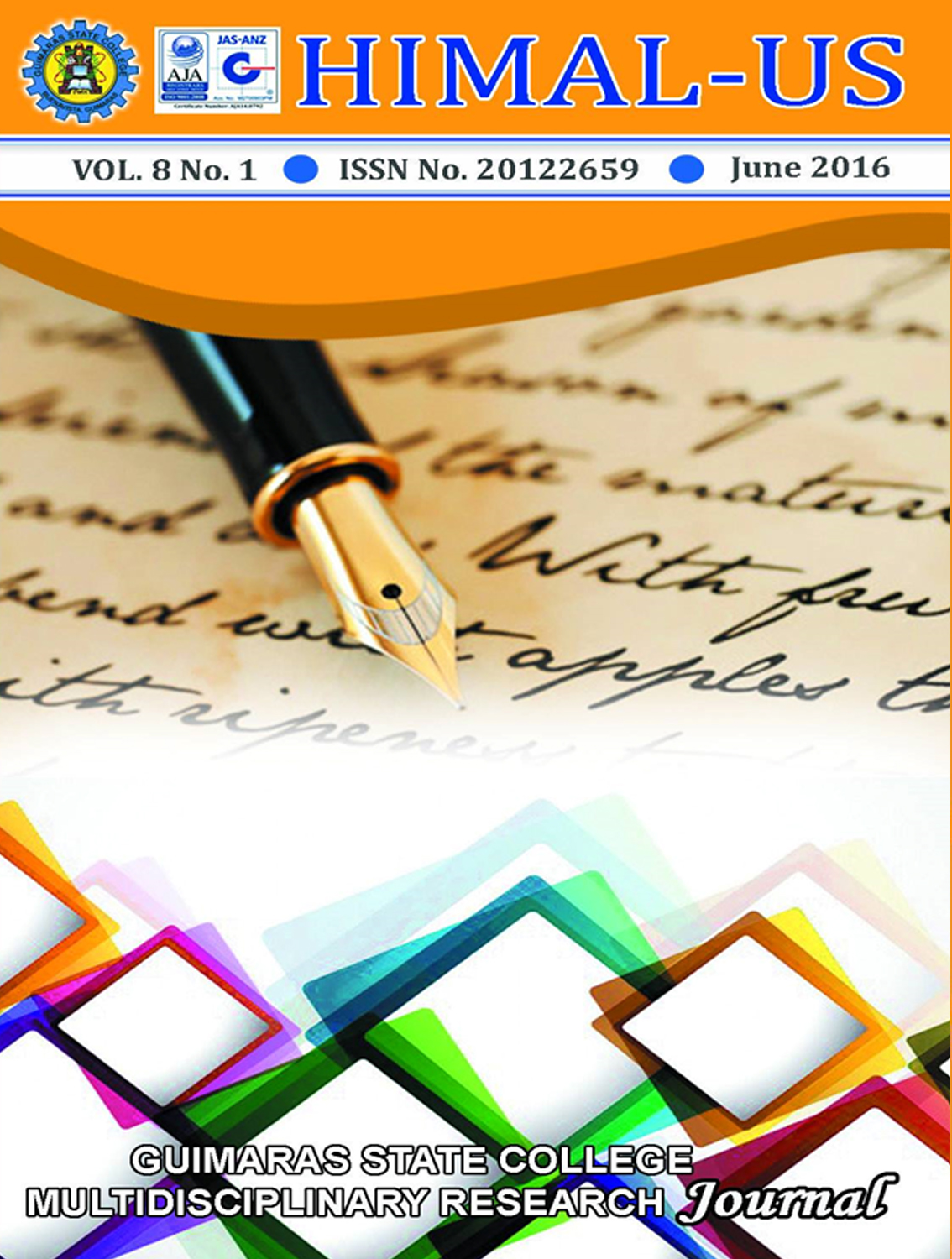The Impact of Mangrove Rehabilitation Project: A Community-Based Conservation
Keywords:
PNAP, Mangrove RehabilitationAbstract
In 2012, The Philippine National Aquasilviculture Project (PNAP) was forged and formally launched by the Department of Agriculture - Bureau of Fisheries and Aquatic Resources (DA-BFAR). To implement the PNAP, a Memorandum of Agreement (MOA) was executed by and between BFAR and the Commission on Higher Education (CHED) on December 16, 2011. The study was conducted to assess the impact of mangrove rehabilitation project implemented in the Municipality of Buenavista, Guimaras covering the seven (7) barangays with a total of 177 beneficiaries as participants. The collaborative mangrove rehabilitation project of Guimaras State College (GSC) and Bureau of Fisheries and Aquatic Resources (BFAR) accomplished about 430,695 planted mangrove propagules at 96.8 hectares area with 85.17% survival rate. The contribution of the projects to fisher folks to ease their financial woes may be represented by an appreciation of a beneficiary of the amount he/she signed in payroll. The Local Government Officials and the beneficiaries have been appreciating the BFAR-PNAP implementation; for them, the projects can be trusted to help their constituents. The projects have never been reneged ever since to pay all direct beneficiaries. The project commensurate a positive impact in terms of Economic, Environmental and Social aspects and the beneficiaries have a high satisfaction on the Mangrove Rehabilitation Project implemented by GSC and BFAR.





